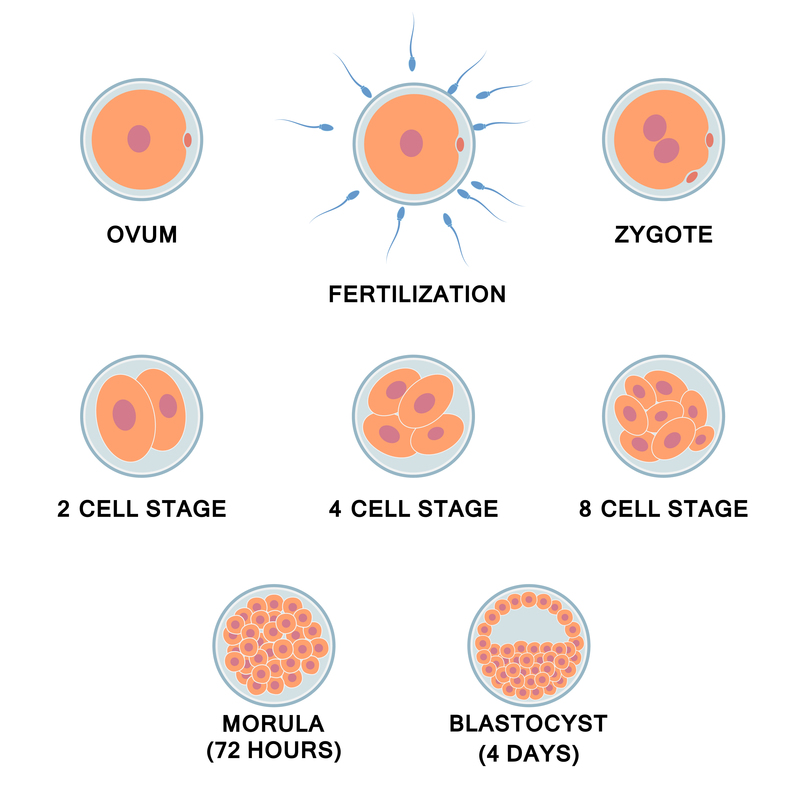18.3 Embryonic development
 After fertilization, the newly formed single-celled zygote begins to divide into multiple cells. The number of cells doubles during each division.
After fertilization, the newly formed single-celled zygote begins to divide into multiple cells. The number of cells doubles during each division.
About a week after fertilization, a hollow ball of cells called a blastocyst arrives in the uterus. The blastocyst is then implanted on the wall of the uterus.
At this point, the rapidly developing embryo is still not larger in size than the fertilized egg.
The zygote initially receives nutrients from the ovum. Once attached to the uterus, the embryo receives nutrients from a yolk sac until the umbilical cord and placenta have developed.
In an eight-week-old embryo, all the major organs have already been developed. From this point onwards, the developing individual is called a fetus. The eight-week-old fetus is approximately three centimeters long, and its head and limbs can already be distinguished. Its faint heartbeat is also already noticeable.
Image on the right: The first stages of human embryonic development.